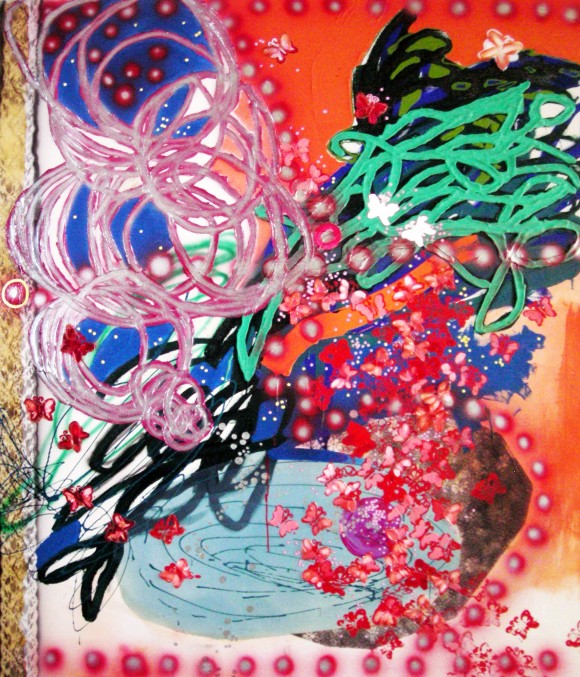Contemporary Art vs. Modern Art Defining "Now" from "Then"
November 30, 2015
According to the Merriam-Webster Dictionary, the word “modern” is defined as, “of or relating to the present time.” The word “contemporary” is defined as “happening or beginning now or in recent times.” While these definitions may appear to be similar or even nearly identical, in terms of art genres, they are very incongruent.
The modern art movement began in the 1860’s during the period of the Industrial Revolution. With the advent of photography, artists no longer saw the necessity to make art for the sake of portraying reality exclusively. Many artists therefore began experimenting with color, form, shape, abstraction, different mediums, and different techniques. Modern art was a major diversion from techniques of the past, as described below by Melissa Ho, an assistant curator at the Hirshorn Museum:
“[Traditional academic painting of the 17th, 18th and 19th centuries] was about perfect, seamless technique and using that perfect, seamless technique to execute very well-established subject matter […] With modern art, there is this new emphasis put on the value of being original and doing something innovative.”
Modern art made way for many different trends and movements, including futurism, cubism, abstract expressionism, pop art, and
many more. Al Held and Roy Lichtenstein were two very influential modern artists who helped define the trends within modernism, and we are proud to have works by both included in the Escalette Permanent Collection of Art. Al Held was primarily focused around abstract expressionism, but particularly favored playing with geometric shapes, layers, and illusion. All three of these components are clearly exhibited in his work Stoneridge, which is currently on display in Beckman Hall, third floor. Roy Lichtenstein, on the other hand, was a passionate participant and leader of the pop art movement. Early on in his career, he would depict widely recognized images from comic books and advertising, putting his own spin on the illustrations using bright colors and large shapes. Later on in his career in the 1970’s, however, he began to experiment with more abstract forms, as can be seen in his work Mirror #5, which is also on display on the third floor of Beckman Hall.
Contemporary art, on the other hand, is typically less well-defined as the former topic. This style is most commonly described as belonging to artists still living today. Much like what spurred the modern art movement, contemporary art has begun to incorporate new mediums to match societal advancements in resources and technology- including video art, site-specific art, and installation art.
The majority of the Escalette Permanent Collection of Art features some intriguing pieces by contemporary artists. Two of these artists are Lisa Adams and Ellina Kevorkian , both of whom have their works on display on the fourth floor of Beckman Hall. Lisa Adams primarily works to create paintings and gouaches, and typically depicts scenes of nature. In The Wood Family, Adams further incorporates nature into her piece by adding wood as a medium in the work itself. Further exploring the idea of mixed media within a singular piece of art is Ellina Kevorkian, who, as she advertises on her own website, “creates hybridized relationships between painting, photography, video, and performance using tropes, humor, and the visual languages of art and popular culture.” Kevorkian is “contemporary” in every sense of the word, and her work cannot be represented better than in her piece Last Night My Tears Were Falling, I Went To Bed So Sad And Blue, Then I Had a Dream Of You. Using glitter, spray paint, acrylic paint, lace, and puff paint, Kevorkian creates a rich world poking fun at the trope of what is widely considered, “feminine.”

Ellina Kevorkian,
Last Night My Tears Were Falling, I Went To Bed So Sad And Blue, Then I Had a Dream Of You
, 2002, Mixed Media, 84″ x 72″
While contemporary art and modern art may sound similar, in form and practice they are quite contrasting. In many ways, modern art has laid the groundwork for contemporary art, as both seem to have arisen directly as a result of technological advancements in society and are concerned with being indicative of popular culture or social issues of their respective time period. We here at the Escalette Collection invite you to take a look at the artwork on display all around Chapman University’s campus, exploring our vast collection of modern and contemporary artists and seeing if you can define what makes each unique to one another!





